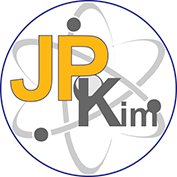The potential of methanol extract nanoemulsion from gletang flower (Tridax procumbens) as an antibacterial agent against pathogenic bacteria
DOI:
https://doi.org/10.24114/jpkim.v16i3.65168Keywords:
E. coli, Nanoemulsion, S. aureus, T. procumbensAbstract
Gletang plant is a weed that grows wild and is widely distributed in various places such as rice fields, plantations, and roadsides. Phytochemical screening of gletang flower extract using methanol revealed the presence of secondary metabolites such as alkaloids, flavonoids, steroids, phenols, terpenoids, and tannins. This study aims to formulate a nanoemulsion from the methanol extract of gletang flowers. The extraction was performed by maceration with methanol 96%. The nanoemulsion was characterized by testing its pH, % transmittance, stability, viscosity and particle size using a particle size analyzer. The antibacterial activity was tested against Staphylococcus aureus and Escherichia coliusing the Kirby-Bauer method. The results of pH characterization, % transmittance, stability and viscosity tests met the standards. The particle size analyzer showed that the particle size ranged between 300-1000 nm. The antibacterial activity tests indicated that all three formulations showed activity against the pathogenic bacteria E. coli, with formulation 3 showing the highest activity.References
Agidew, M. G. (2022). Phytochemical analysis of some selected traditional medicinal plants in Ethiopia. Bull Natl Res Cent, 46(87). doi:10.1186/s42269-022-00770-8
Badruzzaman, H., Haryati, E., & Susanto, H. (2020). Uji efektivitas suspensi ekstrak daun songgolangit (Tridax procumbens L.) terhadap penurunan kadar asam urat pada tikus putih jantan. Jurnal Farmasi dan Sains, 1(1), 72-79.
Debeturu, S., Tulandi, S., Paat, V., & Tiwow, G. (2022). Uji aktivitas analgesik ekstrak etanol daun songgolangit (Tridax procumbens L.) terhadap tikus putih (Rattus norvegicus). Biofarmasetikal Tropis, 5(1), 66-72. doi:10.55724/jbiofartrop.v5i1.371
Eqbal, A., Ansari, V. A., Hafeez, A., Ahsan, F., Imran, M., & Tanweer, S. (2021). Recent applications of nanoemulsion based drug delivery system: A review. Research Journal of Pharmacy and Technology, 14(5), 2852-2858. doi:10.52711/0974-360X.2021.00502
Gubbiveeranna, V., & Nagaraju, S. (2016). Ethnomedicinal, phytochemical constituents and pharmacological activities of Tridax procumbens: a review. Int J Pharm Pharm Sci, 8(2), 1-7.
Ingole, V. V., Mhaske, P. C., & Katade, S. R. (2022). Phytochemistry and Pharmacological Aspects of Tridax procumbens (L.): A Systematic and Comprehensive Review. Phytomedicine Plus, 2(1), 100199. doi:10.1016/j.phyplu.2021.100199
Jaiswal, M., Dudhe, R., & Sharma, P. K. (2015). Nanoemulsion: An advanced mode of drug delivery system. Biotech, 5(2), 123-127. doi:10.1007/s13205-014-0214-0
Li, G., Zhang, Z., Liu, H., & Hu, L. (2021). Nanoemulsion-based delivery approaches for nutraceuticals: Fabrication, Application, characterization, biological fate, potential toxicity and future trends. Food & Function, 12(5), 1933-1953. doi:10.1039/D0FO02686G
Nair, A., Greeny, A., Nandan, A., Sah, R. K., Jose, A., Dyawanapelly, S., Junnuthula, V., Athira K. V., & Sadanandan, P. (2023). Advanced drug delivery and therapeutic strategies for tuberculosis treatment. Journal of Nanobiotechnology, 21(414). doi:10.1186/s12951-023-02156-y
Nandi, T., Nayan, M. I. H., & Nisha, M. H. (2022). Phytochemical and Biological Investigation of the Leaves of Tridax procumbens. Journal of Complementary and Alternative Medical Research, 20(3), 34-40. doi:10.9734/jocamr/2022/v20i3418
Pandey, P., Gulati, N., Makhija, M., Purohit, D., & Dureja, H. (2020). Nanoemulsion: A Novel Drug Delivery Approach for Enhancement of Bioavailability. Recent Patents on Nanotechnology, 14(4), 276-293. doi:10.2174/1872210514666200604145755
Qian, C., Decker, E. A., Xiao, H., & McClements, D. J. (2012). Nanoemulsion delivery systems: Influence of carrier oil on β-carotene bioaccessibility. Food Chemistry, 135(3), 1440-1447. doi: 10.1016/j.foodchem.2012.06.047
Rai, S. K., Mishra, N., & Yadav, K. S. (2023). Nanoemulsions: A potent carrier system for transdermal drug delivery. Journal of Drug Delivery Science and Technology, 79, 104049. doi:10.1016/j.jddst.2023.104049
Shakeel, F., Baboota, S., Ahuja, A., Ali, J., Aqil, M., & Shafiq, S. (2007). Nanoemulsions as vehicles for transdermal delivery of aceclofenac. AAPS PharmSciTech, 8(104), E1-E9. doi:10.1208/pt0804104
Situmeang, B., Ibrahim, A.M., Bialangi, N., Musa, W.J.A., & Silaban, S. (2019). Antibacterial activity and phytochemical screening of kesambi (Sapindaceae) against Eschericia coli and Staphylococcus aureus. Jurnal Pendidikan Kimia, 11 (1), 14-17. doi:10.24114/jpkim.v11i1.13078
Sneha, K., & Kumar, A. (2022). Nanoemulsions: Techniques for the preparation and the recent advances in their food applications. Innovative Food Science & Emerging Technologies, 76, 102914. doi:10.1016/j.ifset.2021.102914
Widyawati., Arma, U., Fadriyanti, O., Situmeang, B., and Silaban, S. (2022). Antibacterial activity of different parts of gletang (Tridax procumbens) from West Sumatera Indonesia. Rasayan Journal of Chemistry. 5 (4): 2382-2386. doi:10.31788/RJC.2022.1547084
Downloads
Published
How to Cite
Issue
Section
License

This work is licensed under a Creative Commons Attribution 4.0 International License.
Authors published in this journal agree to the following terms:
- The copyright of each article is retained by the author (s).
- The author grants the journal the first publication rights with the work simultaneously licensed under the Creative Commons Attribution License, allowing others to share the work with an acknowledgment of authorship and the initial publication in this journal.
- Authors may enter into separate additional contractual agreements for the non-exclusive distribution of published journal versions of the work (for example, posting them to institutional repositories or publishing them in a book), with acknowledgment of their initial publication in this journal.
- Authors are permitted and encouraged to post their work online (For example in the Institutional Repository or on their website) before and during the submission process, as this can lead to productive exchanges, as well as earlier and larger citations of published work.
Jurnal Pendidikan Kimia is licensed under a Creative Commons Attribution 4.0 International License













